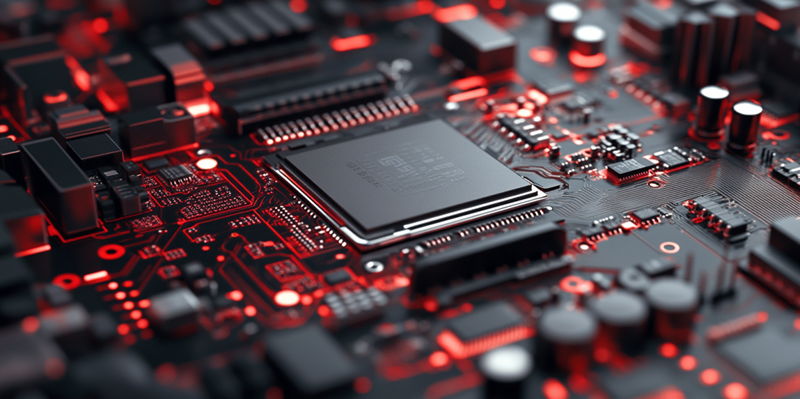The AMD Ryzen 7 7800X3D has earned a sterling reputation as one of the best gaming processors available on the market, surpassing top Intel processors such as the Intel Core i9-14900K and Intel Core i7-14700K in pure gaming capability. The high performance delivered by this AMD chip has led to an insatiable demand, making it a highly sought-after commodity among tech enthusiasts and gamers. As supply dwindles and anticipation mounts for the launch of new processors like the Ryzen 7 9800X3D and Intel’s Arrow Lake chips, market dynamics have significantly shifted, resulting in escalating prices and limited availability.
The Performance Edge: Why Ryzen 7 7800X3D Is Coveted
The Ryzen 7 7800X3D’s reputation hinges on its remarkable gaming performance, setting a benchmark that has become a gold standard in the industry. Gamers and tech enthusiasts clamor for this processor, attracted by its superior capability that even outdoes the best offerings from Intel. This apex performance has driven demand to extraordinary levels, making the chip a must-have for high-end gaming rigs. Consistently stellar reviews and benchmarks have only compounded its desirability among consumers aiming for top-tier performance.
Retailers have taken keen note of this market fervor. As stocks of the Ryzen 7 7800X3D continue to dwindle, its scarcity has created a scenario where the processor becomes even more desirable. Consequently, prices have surged as retailers seize the opportunity to capitalize on this seismic demand. This sets the stage for a classic supply-and-demand imbalance, where the limited availability of a high-demand product drives prices even higher, putting the processor at a premium.
Spiking Prices and Regional Variations
The price hike for the Ryzen 7 7800X3D in the US has been particularly significant, with substantial increases observed across major retailers. The processor is now priced at $679.99 on Newegg, a markup of nearly $200 above its Manufacturer’s Suggested Retail Price (MSRP). Further complicating matters, the majority of shipments come from China, introducing additional delays and elevated costs. Amazon has mirrored this trend, listing the processor for about $50 more than its original price, coupled with a delivery delay of around a week.
Interestingly, this price surge is not uniformly pronounced globally. In regions like the UK, the rise in pricing has been more moderate, underscoring how regional market dynamics can profoundly influence the consumer experience. For US consumers, the steady price inflation over a 60-day period, as tracked by PCPartPicker, highlights a concerning trend of escalating costs. This regional disparity illustrates how supply chain logistics and local demand can result in different pricing structures in various markets.
Anticipation for New Launches: Should Consumers Wait?
With industry buzz surrounding the impending launch of the Ryzen 7 9800X3D and Intel’s Arrow Lake processors, potentially as soon as October, consumers are grappling with a crucial decision: to purchase now or to exercise patience. The anticipated new models promise better performance and potentially more affordable prices, making a compelling case for waiting. This expectation is further reinforced by the likelihood of a price correction for the Ryzen 7 7800X3D once the new models hit the market, potentially leading to more reasonable pricing.
The potential for a decrease in demand for current models once new products are released could result in a significant price drop for the Ryzen 7 7800X3D, making it more accessible for budget-conscious consumers. This strategic timing could provide an opportunity for buyers to secure high-performing processors at a reduced cost, underscoring the potential benefits of waiting for new launches.
The Market’s Need for Affordability: Mid-Range and Low-End Components
A recurring issue in the tech market is the pressing need for affordable mid-range and low-end components. While the Ryzen 7 7800X3D excels in performance, its current inflated pricing places it out of reach for many consumers. This situation highlights a significant market segment that is driven by the quest for powerful yet cost-effective components. As new processors make their debut, a ripple effect could transpire, making these highly sought-after high-performance components more attainable for a broader audience.
The critical balance between performance and price remains essential to ensure that technological advancements are accessible to a wider demographic. The introduction of new models could democratize access to high-performance computing by bringing down the prices of existing high-end processors, thereby catering to the market’s need for affordability without compromising on quality.
Consumer Behavior and Market Dynamics
The AMD Ryzen 7 7800X3D has built a stellar reputation as a top-tier gaming processor, outperforming leading Intel chips like the Intel Core i9-14900K and i7-14700K in gaming prowess. This high-performing AMD processor has spurred immense demand, making it highly coveted among tech aficionados and gamers. Its scarcity, paired with an eager anticipation for upcoming models such as the Ryzen 7 9800X3D and Intel’s Arrow Lake chips, has significantly altered market dynamics. As a result, prices are climbing and availability is tightening, creating a sense of urgency among those looking to upgrade their gaming systems. This heightened demand underscores the chip’s dominance and the fierce competition within the gaming processor market. With new releases on the horizon, including impressive advancements in processing power and efficiency, the anticipation is palpable. Consumers are keen to see how these upcoming chips will stack up against the Ryzen 7 7800X3D, which has set a high bar in terms of gaming performance and overall value.

